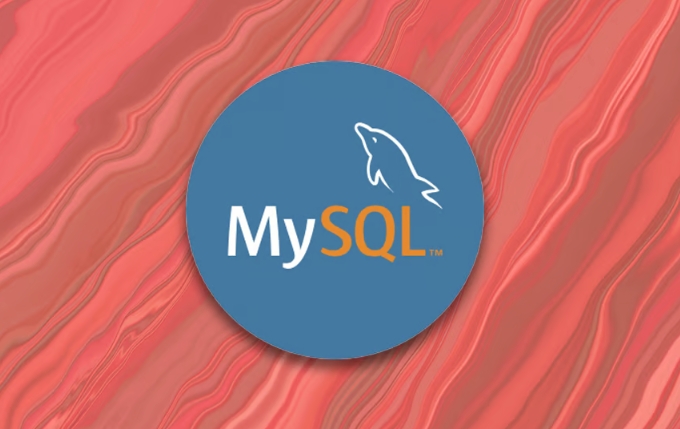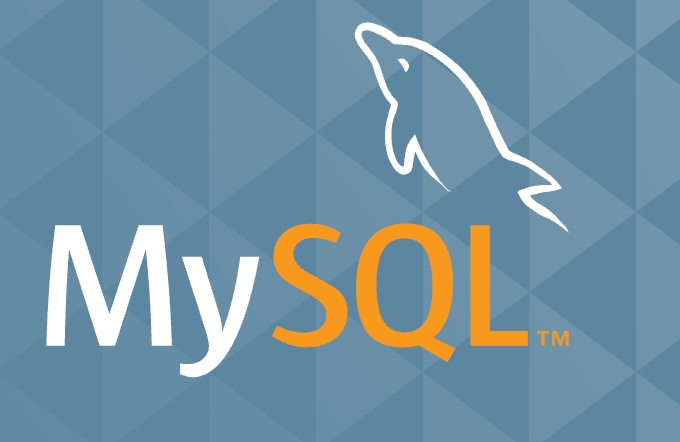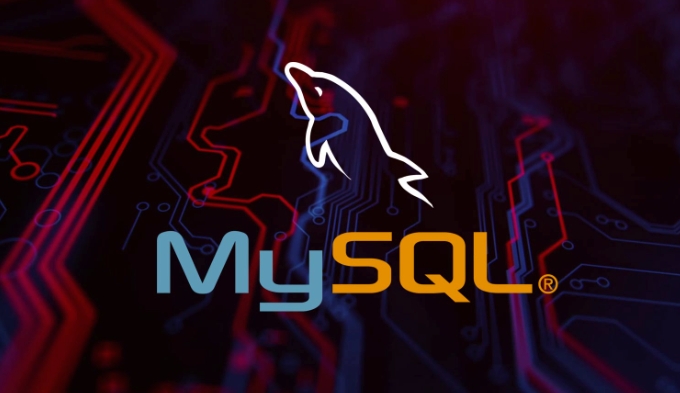Exporting MySQL database to JSON format can be achieved by the following methods: 1. Use SQL queries to generate JSON directly, suitable for exporting small data volumes and single tables, implemented through the JSON_OBJECT() and JSON_ARRAYAGG() functions, but does not support large tables and only output data; 2. Exporting using scripting languages ??such as Python has higher flexibility, can handle multiple tables, add metadata, and format output; 3. Use third-party tools such as phpMyAdmin or MySQL Workbench to simplify the process, suitable for users who do not want to write code, but may have size limitations and privacy risks; in addition, if the goal is backup or migration, it is recommended to use mysqldump or return data on demand through the API.

Exporting MySQL database to JSON format is not a native supported feature, but it can be implemented through some methods. The key is to understand your needs: you may want to use data for front-end display, API interface debugging, or as a form of backup.

The following are several common and practical methods to help you convert MySQL data into JSON format.
Generate JSON directly using SQL queries
MySQL has introduced several functions to support JSON generation and operation since 5.7, among which the most commonly used are JSON_OBJECT() and JSON_ARRAYAGG() .

Applicable scenarios : You only need to export part or all of the data of a certain table as JSON, and do not involve the entire database structure.
Example statement :

SELECT JSON_OBJECT('id', id, 'name', name, 'email', email) AS json_data FROM users;
If you want to merge multiple records into one array:
SELECT JSON_ARRAYAGG(JSON_OBJECT('id', id, 'name', name, 'email', email)) AS json_data FROM users;
This can be run directly on the client (such as command line, Navicat, DBeaver), and then copy the output and save it as a .json file.
Notes :
- Field names need to be listed and mapped manually.
- Not suitable for large tables, may cause query performance to degrade.
- Only output data, not including table structure.
Export using scripting languages ??such as PHP/Python
If you need more flexible control, such as handling multiple tables, adding field comments, formatting output, etc., it will be more appropriate to use scripting language.
Recommended languages : PHP, Python, and Node.js can all be done, here we take Python as an example.
The steps are briefly as follows :
- Install
mysql-connector-python - Connect to the database
- Execute a query and convert the results into a dictionary list
- Write to a file using
json.dump()
Code snippet schematic :
import mysql.connector
import json
conn = mysql.connector.connect(
host="localhost",
user="root",
password="password",
database="mydb"
)
cursor = conn.cursor(dictionary=True)
cursor.execute("SELECT * FROM users")
rows = cursor.fetchall()
with open("users.json", "w") as f:
json.dump(rows, f, indent=4)advantage :
- Supports complex logic processing
- Multiple tables can be processed in batches
- Metadata such as timestamps and version information can be added
Simplify the process using third-party tools
If you don't want to write code, you can also use some ready-made tools to complete the export task.
Recommended tools :
- phpMyAdmin : If you have already installed phpMyAdmin, you can select "Export" when browsing the table and then select "JSON" format.
- MySQL Workbench : Although it cannot be exported directly to JSON, files in CSV or JSON format can be generated through the "Export Wizard" (some versions support).
- Online conversion tools : For example, uploading exported CSV files to certain websites and automatically converting them to JSON.
Note :
- Tools may have size limitations and are not suitable for large amounts of data.
- Online tools have privacy risks, and use sensitive data with caution.
- Exporting results may be less granular than custom scripts.
Additional suggestions: Consider whether the entire library is really needed to export to JSON
Although JSON is a very popular data format, MySQL is not designed for this purpose. If your goal is to migrate data or do backups, the more suitable way is:
- Export SQL files using
mysqldump - If you need to separate structure and data, you can also export the structure as SQL first, and then export the data as JSON separately
- For web application development, it is recommended to return JSON data on demand through the API interface instead of exporting the entire database at once
Basically these are the methods. Just choose the right one according to your actual needs. For example, if you have a small amount of data, you can do it directly by SQL querying. For larger projects, it is easier to write a script.
The above is the detailed content of mysql export database to json. For more information, please follow other related articles on the PHP Chinese website!

Hot AI Tools

Undress AI Tool
Undress images for free

Undresser.AI Undress
AI-powered app for creating realistic nude photos

AI Clothes Remover
Online AI tool for removing clothes from photos.

Clothoff.io
AI clothes remover

Video Face Swap
Swap faces in any video effortlessly with our completely free AI face swap tool!

Hot Article

Hot Tools

Notepad++7.3.1
Easy-to-use and free code editor

SublimeText3 Chinese version
Chinese version, very easy to use

Zend Studio 13.0.1
Powerful PHP integrated development environment

Dreamweaver CS6
Visual web development tools

SublimeText3 Mac version
God-level code editing software (SublimeText3)

Hot Topics
 What is the default username and password for MySQL?
Jun 13, 2025 am 12:34 AM
What is the default username and password for MySQL?
Jun 13, 2025 am 12:34 AM
The default user name of MySQL is usually 'root', but the password varies according to the installation environment; in some Linux distributions, the root account may be authenticated by auth_socket plug-in and cannot log in with the password; when installing tools such as XAMPP or WAMP under Windows, root users usually have no password or use common passwords such as root, mysql, etc.; if you forget the password, you can reset it by stopping the MySQL service, starting in --skip-grant-tables mode, updating the mysql.user table to set a new password and restarting the service; note that the MySQL8.0 version requires additional authentication plug-ins.
 What is GTID (Global Transaction Identifier) and what are its advantages?
Jun 19, 2025 am 01:03 AM
What is GTID (Global Transaction Identifier) and what are its advantages?
Jun 19, 2025 am 01:03 AM
GTID (Global Transaction Identifier) ??solves the complexity of replication and failover in MySQL databases by assigning a unique identity to each transaction. 1. It simplifies replication management, automatically handles log files and locations, allowing slave servers to request transactions based on the last executed GTID. 2. Ensure consistency across servers, ensure that each transaction is applied only once on each server, and avoid data inconsistency. 3. Improve troubleshooting efficiency. GTID includes server UUID and serial number, which is convenient for tracking transaction flow and accurately locate problems. These three core advantages make MySQL replication more robust and easy to manage, significantly improving system reliability and data integrity.
 How to change or reset the MySQL root user password?
Jun 13, 2025 am 12:33 AM
How to change or reset the MySQL root user password?
Jun 13, 2025 am 12:33 AM
There are three ways to modify or reset MySQLroot user password: 1. Use the ALTERUSER command to modify existing passwords, and execute the corresponding statement after logging in; 2. If you forget your password, you need to stop the service and start it in --skip-grant-tables mode before modifying; 3. The mysqladmin command can be used to modify it directly by modifying it. Each method is suitable for different scenarios and the operation sequence must not be messed up. After the modification is completed, verification must be made and permission protection must be paid attention to.
 What is a typical process for MySQL master failover?
Jun 19, 2025 am 01:06 AM
What is a typical process for MySQL master failover?
Jun 19, 2025 am 01:06 AM
MySQL main library failover mainly includes four steps. 1. Fault detection: Regularly check the main library process, connection status and simple query to determine whether it is downtime, set up a retry mechanism to avoid misjudgment, and can use tools such as MHA, Orchestrator or Keepalived to assist in detection; 2. Select the new main library: select the most suitable slave library to replace it according to the data synchronization progress (Seconds_Behind_Master), binlog data integrity, network delay and load conditions, and perform data compensation or manual intervention if necessary; 3. Switch topology: Point other slave libraries to the new master library, execute RESETMASTER or enable GTID, update the VIP, DNS or proxy configuration to
 How to connect to a MySQL database using the command line?
Jun 19, 2025 am 01:05 AM
How to connect to a MySQL database using the command line?
Jun 19, 2025 am 01:05 AM
The steps to connect to the MySQL database are as follows: 1. Use the basic command format mysql-u username-p-h host address to connect, enter the username and password to log in; 2. If you need to directly enter the specified database, you can add the database name after the command, such as mysql-uroot-pmyproject; 3. If the port is not the default 3306, you need to add the -P parameter to specify the port number, such as mysql-uroot-p-h192.168.1.100-P3307; In addition, if you encounter a password error, you can re-enter it. If the connection fails, check the network, firewall or permission settings. If the client is missing, you can install mysql-client on Linux through the package manager. Master these commands
 How does InnoDB implement Repeatable Read isolation level?
Jun 14, 2025 am 12:33 AM
How does InnoDB implement Repeatable Read isolation level?
Jun 14, 2025 am 12:33 AM
InnoDB implements repeatable reads through MVCC and gap lock. MVCC realizes consistent reading through snapshots, and the transaction query results remain unchanged after multiple transactions; gap lock prevents other transactions from inserting data and avoids phantom reading. For example, transaction A first query gets a value of 100, transaction B is modified to 200 and submitted, A is still 100 in query again; and when performing scope query, gap lock prevents other transactions from inserting records. In addition, non-unique index scans may add gap locks by default, and primary key or unique index equivalent queries may not be added, and gap locks can be cancelled by reducing isolation levels or explicit lock control.
 How to alter a large table without locking it (Online DDL)?
Jun 14, 2025 am 12:36 AM
How to alter a large table without locking it (Online DDL)?
Jun 14, 2025 am 12:36 AM
Toalteralargeproductiontablewithoutlonglocks,useonlineDDLtechniques.1)IdentifyifyourALTERoperationisfast(e.g.,adding/droppingcolumns,modifyingNULL/NOTNULL)orslow(e.g.,changingdatatypes,reorderingcolumns,addingindexesonlargedata).2)Usedatabase-specifi
 What is the purpose of the InnoDB Buffer Pool?
Jun 12, 2025 am 10:28 AM
What is the purpose of the InnoDB Buffer Pool?
Jun 12, 2025 am 10:28 AM
The function of InnoDBBufferPool is to improve MySQL read and write performance. It reduces disk I/O operations by cacheing frequently accessed data and indexes into memory, thereby speeding up query speed and optimizing write operations; 1. The larger the BufferPool, the more data is cached, and the higher the hit rate, which directly affects database performance; 2. It not only caches data pages, but also caches index structures such as B-tree nodes to speed up searches; 3. Supports cache "dirty pages", delays writing to disk, reduces I/O and improves write performance; 4. It is recommended to set it to 50%~80% of physical memory during configuration to avoid triggering swap; 5. It can be dynamically resized through innodb_buffer_pool_size, without restarting the instance.






